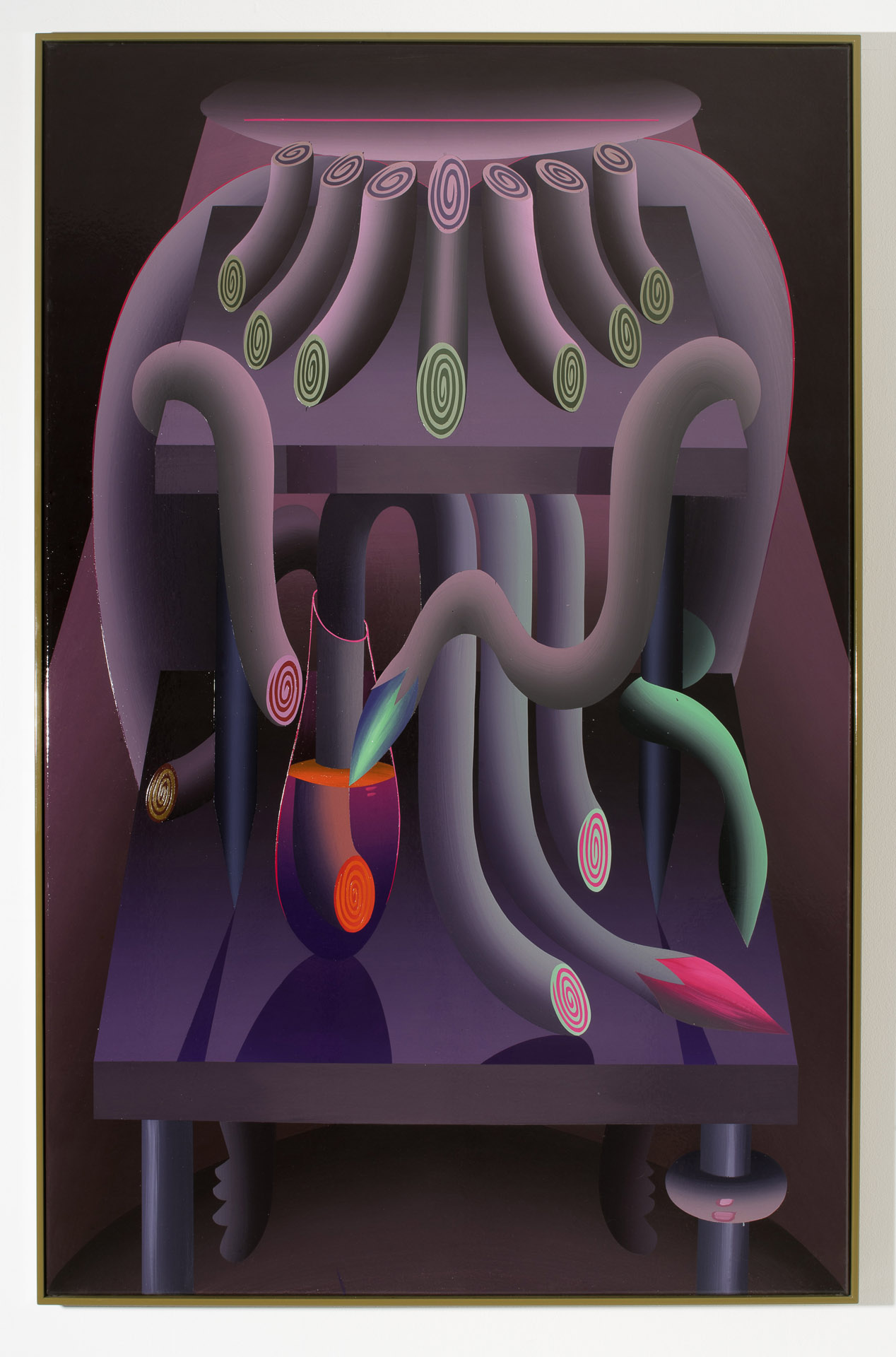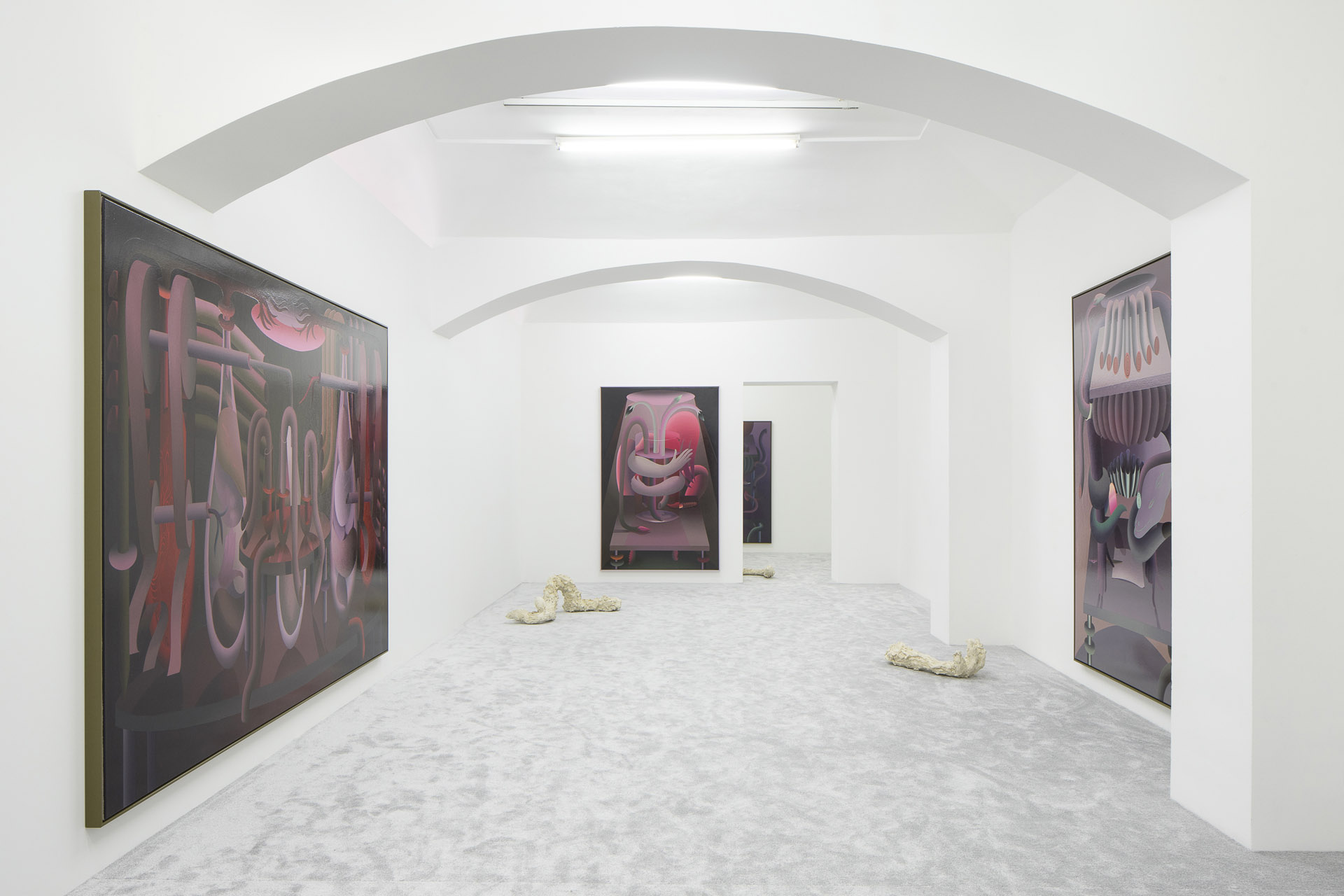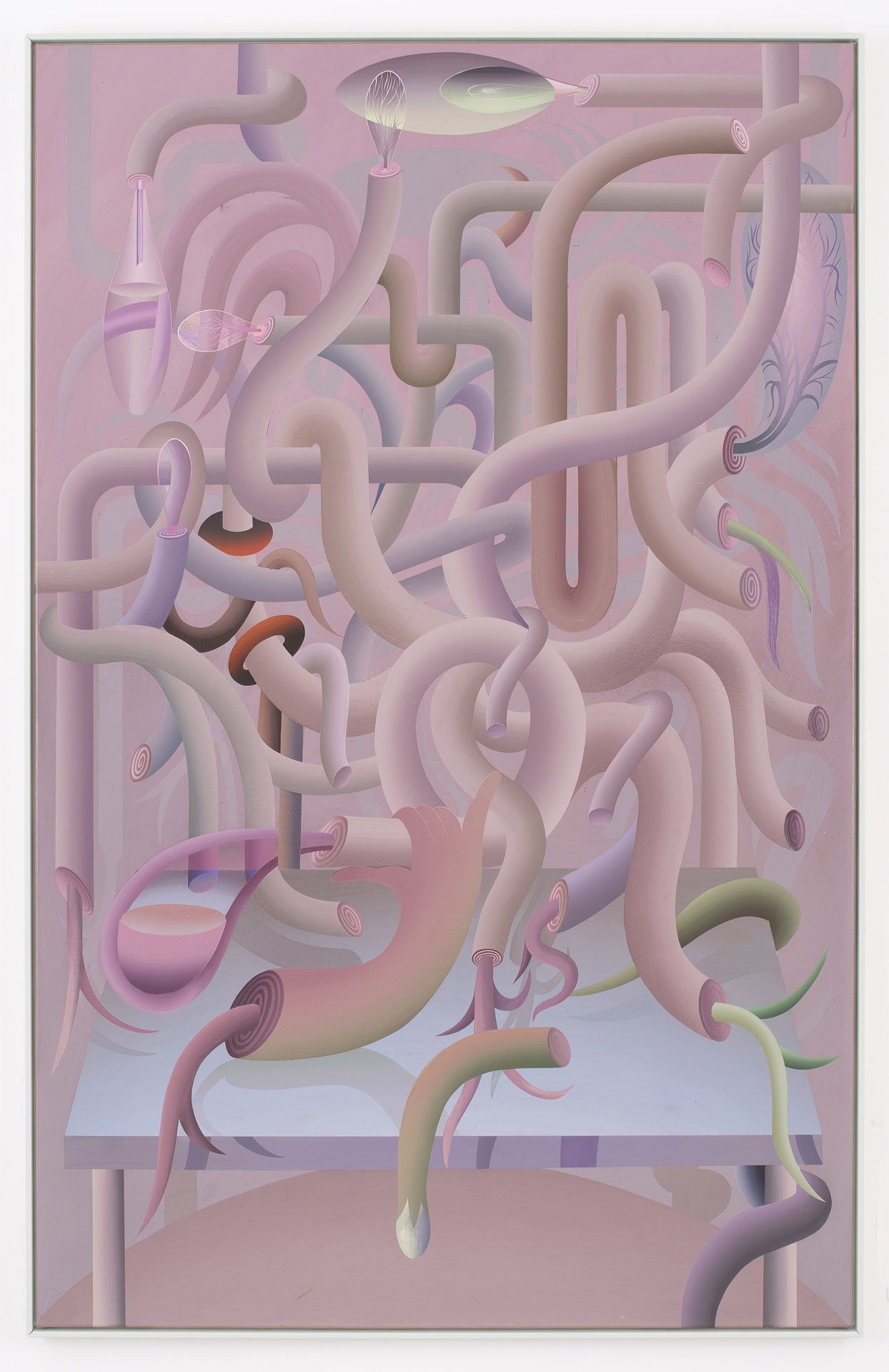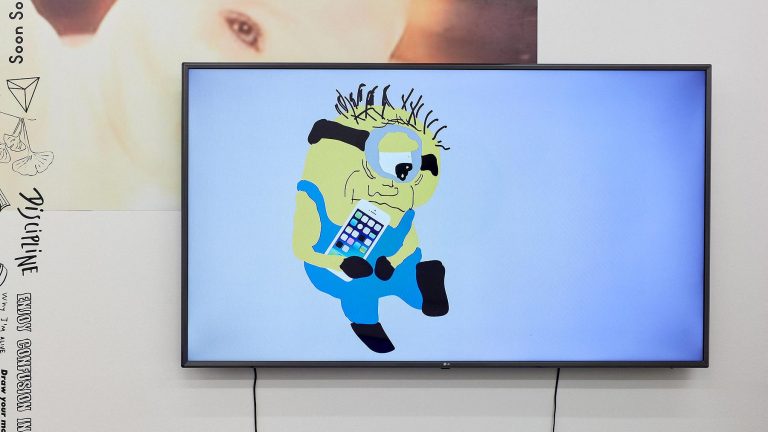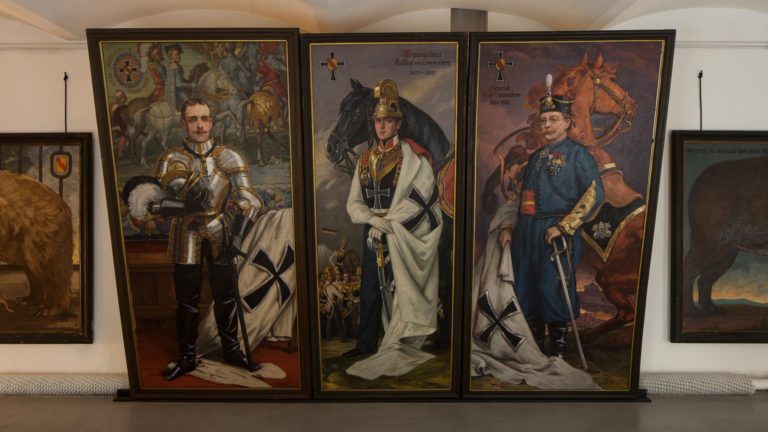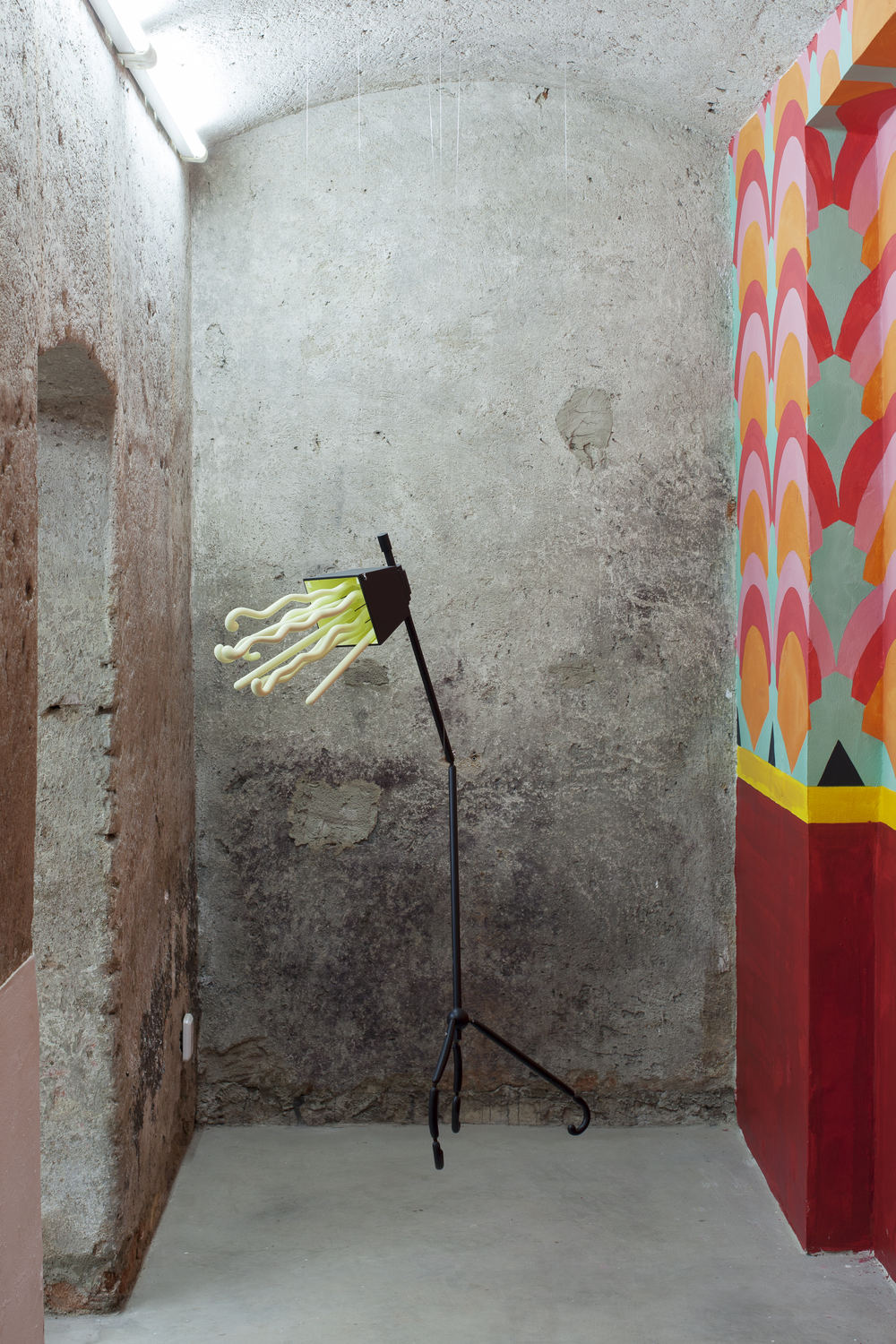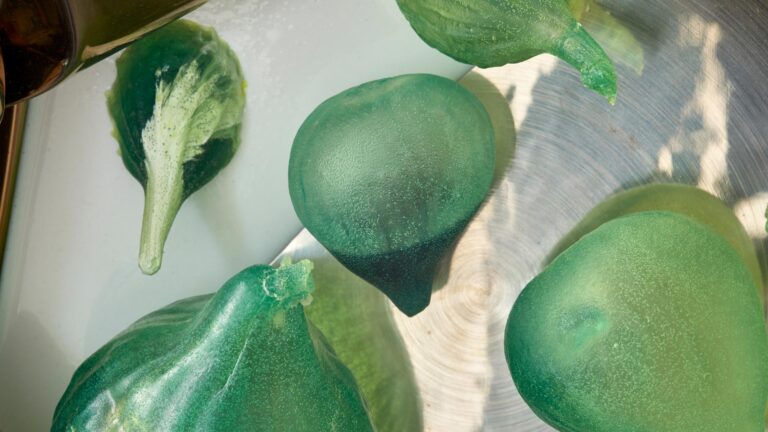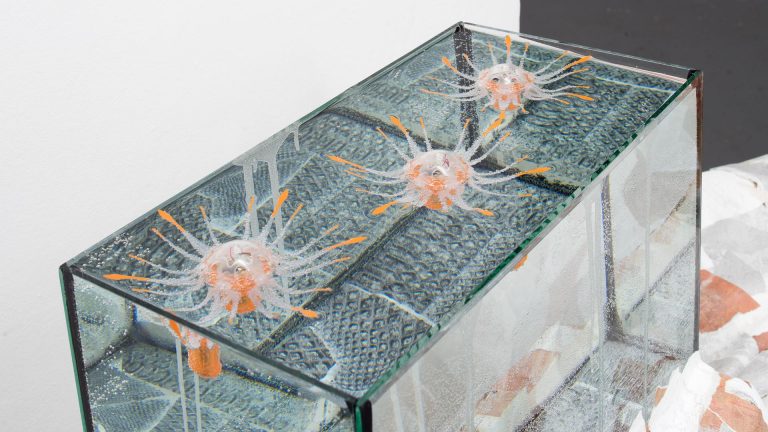Artist: Igor Hosnedl
Exhibition title: Rapunzel
Venue: Hunt Kastner, Prague, The Czech Republic
Date: May 17 – July 17, 2021
Photography: all images copyright and courtesy of the artist and Hunt Kastner
“Be careful what you eat,” reads a lesson for pilgrims crossing the border between fantasy and reality. Sometimes these worlds are so mixed that they are indistinguishable. The stories we tell children contain a mirror of our own traumas and fears. It is sometimes with ironic ridicule that we meet beings from other worlds in everyday life and its metaphors. Rapunzel, for example: the Brothers Grimm portrayed her as a girl who was taken into the care of the witch Gothel, who imprisoned her in a tower without a door or stairway. Every day, Rapunzel lowered her golden hair for her captor to climb up to her. One night, a prince also began coming to her after he had heard her singing. Their tryst did not last long after Gothel discovered it and she cut off Rapunzel’s curls. In another version, Gothel throws the prince from the tower into thorn bushes that poke out his eyes. The ornament of Rapunzel’s fair hair is the central point of the whole story as well as what enters from the story into our everyday life in an even more haunting form. Rapunzel syndrome, or trichobezoar, is a mental illness consisting of eating one’s own hair. An ornament such as curly locks moving through the body can be fatal for a person. It is a strange set of circumstances, so be careful what you eat…
Igor Hosnedl’s pictures combine a strange ornamental tickling in the stomach and childlike naiveté and hope for a happy ending – but this remains unclear. Just as the Brother Grimm’s story does not have a simple and clear ending (in some versions, the captive Rapunzel gives birth to a child or children, while in others her tears return the prince his sight and she ends up in his kingdom), there is also no simple resolution in Hosnedl’s pictures. The narrative of his paintings emerges from the works themselves and permeates installations of past and future exhibitions. The stories are woven in an ornament like curls. The fabric of stories was a theme of Vladimir Propp, who found 31 basic structures in folk tales and Rapunzel would seem to fit into the archetype of villainy. Although Hosnedl does not work with the direct citation of literature, the poetics of linking and blind paths may be a key to deciphering his works.
The paintings themselves take on the theme of ornament as an abstraction; they are non-linear, sometimes figurative and sometimes purely intuitive. It provides an example of a strange, tidy chaos. The principle of ornament is thus not an addition or a compliment of a whole in the sense of decoration; it is a principle of work that transcends the works themselves and weighs them together – and is uniquely reflected in the formal processing of individual paintings. The work Face Powder Trees indulges a linearity so intertwined that we have to give it up. It is the paradox of special pleasure that brings uneasiness. The fairy-tale world of very raw horror unravels on the canvas Pathological Liar: Still Life with Fig, a situation in a dark purple haze – the color of Campanula rapunculus? It is not a world full of danger, but a pleasantly warming world where something strange has just happened. A pilgrim entering such a place will wait a long time before even waking up. The purple lilacs that bloomed during the occult session keep him on the verge of a dream. And what happened to our fairy tale? One day, when Rapunzel looked down from the window of her tower, she saw a blinded prince staggering through the garden. Even after all those years, he hadn’t got used to blindness – he couldn’t even remember where and why he was. The crimson-red blood on his eyelids never disappeared. He was hungry and weak. In a fever, he sat down on the grass and leaned his back against the stone wall of the tower. When she saw him, Rapunzel let down her blonde hair, which had regained its original length, so that she could see her lover again. The prince, intoxicated by its scent, which reminded him of something gentle, began to devour it voraciously until it merged with his own body and penetrated his being. And if they haven’t died, they are living like this until today.
Hosnedl (*Úherské Hradiště, 1988) is a 2013 graduate of the Prague Academy of Fine Arts, studying in the drawing atelier of Jitka Svobodova and painting studio of Vladimír Skrepl/Jiří Kovanda. He has exhibited in solo and group exhibitions at Ribot Gallery (with Vera Kox, curated by Dominico di Chirico), Milan, 2020; Nod Gallery (solo), Prague, 2019; FAIT Gallery (solo), Brno, 2019; EIGEN+ART Lab (solo), Berlin, 2019; VDIFF, (curated by Milan Mikulašík), DUMB, House of the Lords of Kunštat Brno, 2019; Downs & Ross (solo), NY, New York, 2018; Horizont Gallery (solo), Budapest, 2018; After Late for Pro: Office work (curated by Tereza Jindrová), Meetfactory, Prague, 2017; VOGL (with Klára Hosnedlová, curated by Edit Jeřabková), hunt kastner, Prague, 2016; and Galerie Jeleni (solo), Foundation and Center for Contemporary Arts in Prague, 2016. He currently lives and works in Berlin, with his wife, also a 2013 AVU graduate, Klára Hosnedlová, with whom he often collaborates.
Text by Eva Skopalová

